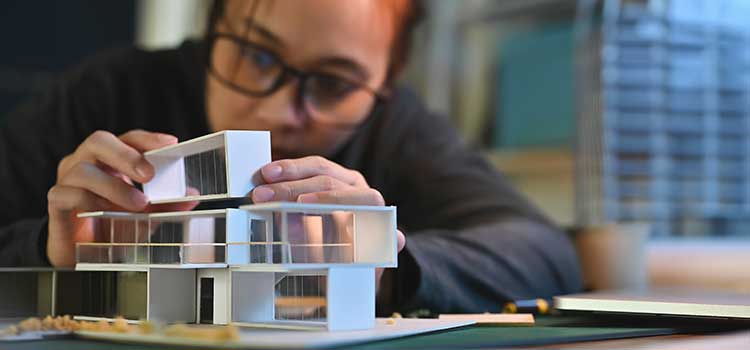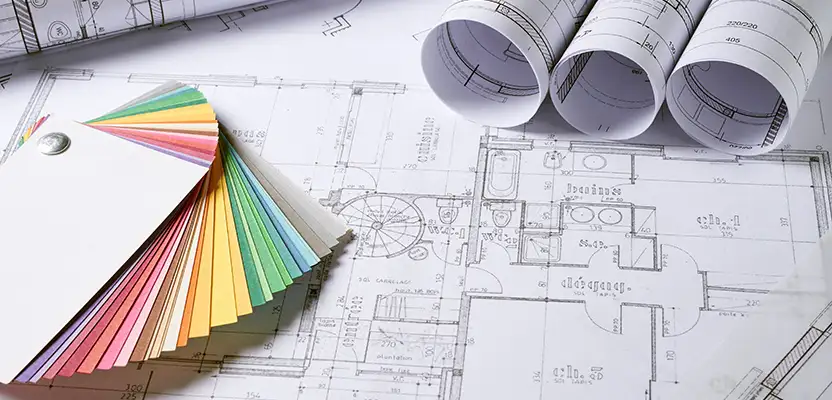Architect Tips for Planning Current Residential Spaces
Architect Tips for Planning Current Residential Spaces
Blog Article
Recognizing the Diverse Career Paths Available for Aspiring Architect
As a hopeful Architect, you have a globe of occupation courses waiting for you. Whether you're drawn to typical design or the nuances of lasting layout, there's a specific niche that aligns with your rate of interests.
Typical Style: Creating Structures and Structures
Conventional architecture concentrates on making buildings and frameworks that blend functionality with aesthetic allure. As you discover this area, you'll appreciate the detailed balance between form and function. You'll learn to draw motivation from historic designs, including elements like symmetry, materials, and craftsmanship. Your styles can mirror cultural heritage, showcasing local customs while satisfying modern-day demands.
You'll establish abilities in composing, model-making, and website analysis, enabling you to envision and communicate your ideas efficiently. Engaging with clients, you'll need to understand their vision and convert it into practical designs.
In addition, developing codes and sustainability techniques are important in your work, ensuring your structures are eco pleasant and risk-free. As you grow in your career, you'll locate possibilities in household, industrial, or even remediation projects, each offering one-of-a-kind obstacles. Accepting standard architecture leads the way for a satisfying profession that admires the past while forming the future.
Urban Planning: Shaping Areas and Public Spaces
As an ambitious Architect, you can play a crucial duty as a metropolitan planner, changing just how areas connect and function. By employing community interaction methods, you'll assure that residents have a voice in shaping their setting. And also, incorporating sustainable style concepts will assist create spaces that not only satisfy today's needs however also safeguard the future.
Role of Urban Planners
While many might think of architects as the sole visionaries behind buildings, urban planners play a vital function in shaping the wider landscape of areas and public rooms. By teaming up with numerous stakeholders, you'll aid make parks, transport systems, and property locations that advertise social communication and availability. Your experience in spatial layout and area characteristics enables you to visualize future growth while protecting cultural heritage.
Community Engagement Approaches
Effective community engagement strategies are essential for metropolitan coordinators to guarantee that the voices of citizens are listened to and valued in the planning procedure. To cultivate significant discussion, you should prioritize open online forums and workshops where community participants can share their concepts and issues. Usage studies and social networks to get to a wider audience, making certain diverse viewpoints are included. Collaborating with regional organizations can improve count on and facilitate much deeper connections. It's important to provide clear details regarding proposed projects and decision-making procedures, allowing residents to really feel informed and equipped. By proactively incorporating and listening responses, you'll develop spaces that reflect the area's requirements, eventually bring about even more successful and lasting urban atmospheres. Embrace transparency and continual discussion for long lasting impact.
Sustainable Style Concepts
When developing urban areas, integrating sustainable design principles is crucial for developing settings that prosper both ecologically and socially. Consider incorporating eco-friendly spaces, like parks and gardens, to improve biodiversity and improve air top quality.
Creating with water conservation in mind is also crucial-- consider rain yards and absorptive surface areas to handle stormwater. Entailing neighborhood members throughout the planning procedure assurances that the spaces you develop satisfy their needs and urge social interaction. By welcoming these principles, you'll add to lively, sustainable city landscapes that benefit every person.

Landscape Style: Producing Sustainable Outside Environments
As you explore landscape style, you'll uncover necessary style concepts that produce practical and gorgeous outside areas. Lasting techniques play an essential role in guaranteeing these environments grow while minimizing environmental impact. And also, you'll find a range of job chances that allow you to make an actual difference in how individuals interact with nature.
Layout Principles in Landscape
Recognizing design concepts in landscape architecture is essential for developing sustainable exterior environments that balance with nature. You'll need to ponder components like percentage, balance, and range to assure your styles feel cohesive and welcoming. Integrating native plants not just improves biodiversity however additionally decreases water usage, making your landscape durable. Think of the circulation of space and just how people interact with it; paths and seating locations must welcome exploration and relaxation. Additionally, take notice of seasonal changes, designing with products that match the environments year-round (Architect). By focusing on sustainability and aesthetic appeals, you can produce outside rooms that enhance the area and promote well-being. Embracing these concepts will establish a solid structure for your job in landscape style.
Lasting Practices Review
Lasting practices in landscape style not only concentrate on aesthetics yet likewise focus on ecological health and wellness and source conservation. You can develop rooms that promote soil health and wellness, such as practicing and making use of organic products permaculture concepts. Eventually, these techniques guarantee your layouts benefit both individuals and the atmosphere for years to come.
Career Opportunities Exploration
With a solid structure in lasting methods, landscape style supplies a variety of profession paths that allow you to make a meaningful impact on the environment. Urban planners usually work together with landscape designers to create environment-friendly rooms in city setups, improving city livability. If you're enthusiastic regarding education, consider becoming a landscape architecture educator, motivating future generations.
Lasting Style: Focusing on Eco-Friendly Practices
As you discover your job in style, accepting environmentally friendly practices can set you apart in an affordable area. Lasting layout concentrates on developing structures that minimize environmental effect while improving passenger wellness. By integrating eco-friendly materials, energy-efficient systems, and lasting building strategies, you'll add to a greener future.
Begin by gaining understanding of green qualifications like LEED or BREEAM, which can bolster your qualifications. Consider exactly how all-natural light, ventilation, and thermal effectiveness can optimize style. Collaborate with engineers and ecological consultants to introduce remedies that reduce waste and save sources.
Don't fail to remember the relevance of community involvement-- interesting local stakeholders can influence layouts that integrate with the environment. As clients significantly focus on sustainability, your proficiency in green methods will certainly not just attract jobs but also meet your interest for responsible design. Accept this critical aspect of the occupation, and see your occupation grow.
Historic Preservation: Safeguarding and Bring Back Cultural Heritage
While you start on your architectural journey, think about the necessary duty of historical conservation in preserving our social heritage. This area concentrates on the security and repair of substantial structures, sites, and structures that tell the stories of our past. By involving in historical conservation, you'll assist guard the architectural legacy that shapes area identity.
As a historical preservation Architect, you'll evaluate historical significance and examine the problem of structures. You'll work closely with preservationists and chroniclers to assure genuine remediation strategies are employed. This career path permits you to blend creativity with study, allowing you to make services that appreciate original products and craftsmanship.
Your work not only adds to sustainability by reusing existing buildings but also cultivates a sense of pride within neighborhoods. Accepting this course will certainly assist you become a guardian of background, maintaining the stories and visual appeals that improve our lives.
Interior Design: Enhancing Indoor Spaces
Historical conservation and interior style both share a dedication to boosting the built environment, but they concentrate on different elements. While historical preservation stresses maintaining a structure's social and historical value, interior architecture absolutely nos in on maximizing interior rooms for functionality and appearances.
As an aspiring Architect, you'll discover that interior architecture permits you to mix creativity with technical abilities. You'll make areas that not only look excellent however likewise advertise comfort and effectiveness. This field involves understanding how light, color, and materials connect within click here a room, affecting state of mind and use.
You'll deal with various projects, from residential homes to business workplaces, ensuring that each setting meets the needs of its residents. By focusing on individual experience, you can change insides into inspiring and practical spaces, making a considerable influence on how individuals engage with their surroundings. Accept the possibility to enhance interior environments and form the means individuals live and work.
Industrial Design: Combining Performance With Visual Appeals
Industrial design plays a necessary duty in developing items that seamlessly mix appearances with capability, ensuring that what you utilize day-to-day is not just aesthetically attractive but also functional. As a hopeful Architect, you might involve yourself in this field, concentrating on creating whatever from furnishings to customer electronics. Your job entails recognizing individual demands, materials, and manufacturing processes, allowing you to develop cutting-edge remedies that boost everyday experiences.
In industrial style, you'll frequently collaborate with marketing professionals, designers, and makers, guaranteeing that your designs are not only stunning yet additionally practical. You'll find out to balance kind and function, prioritizing functionality without giving up style. By honing your skills in sketching, 3D modeling, and prototyping, you'll be well-equipped to bring your ideas to life. This career path uses a dynamic atmosphere where imagination fulfills functionality, making it a rewarding choice for architects interested in shaping Architect the products of tomorrow.
Often Asked Questions
What Educational Accreditations Do I Need to Come To Be an Architect?
To end up being an architect, you'll require a professional level in style, normally a Bachelor's or Master's. Furthermore, you'll have to finish a teaching fellowship and pass the Architect Enrollment Examination to exercise lawfully.
Are There Qualification Needs for Various Building Profession Paths?
Yes, there're qualification demands for numerous building courses. Architect. You'll require to pass examinations, full teaching fellowships, and sometimes seek specialized training, relying on your chosen emphasis, like landscape design, metropolitan style, or historic conservation
What Software Program Skills Are Necessary for Architects Today?

Just How Can I Gain Practical Experience While Studying Design?
You can gain sensible experience by interning at architectural companies, taking part in design competitors, offering for neighborhood jobs, or teaming up get more info with classmates on real-world tasks. These possibilities enhance your skills and develop valuable connections in the market.
What Task Opportunities Exist Outdoors Conventional Architecture Firms?
You can check out various job possibilities outside standard architecture companies, like metropolitan planning, interior layout, landscape style, construction management, property advancement, or perhaps duties in sustainability consulting. Each offers one-of-a-kind obstacles and benefits.
Whether you're attracted to conventional architecture or the nuances of lasting design, there's a particular niche that straightens with your passions.When designing urban spaces, incorporating lasting style principles is crucial for creating atmospheres that grow both ecologically and socially.As you discover landscape design, you'll uncover important design concepts that develop useful and stunning outdoor spaces.Comprehending style principles in landscape style is essential for producing sustainable exterior atmospheres that harmonize with nature.In industrial layout, you'll often work together with marketing professionals, designers, and producers, making certain that your styles are not only gorgeous yet additionally practical.
Report this page